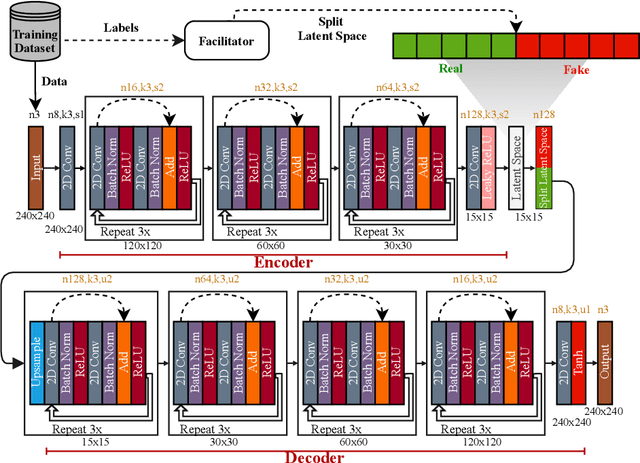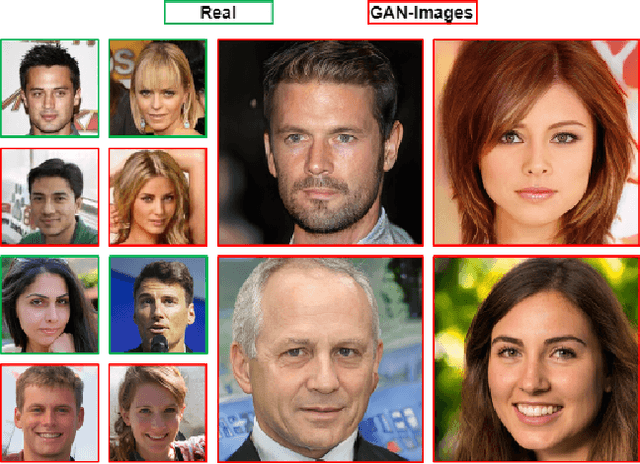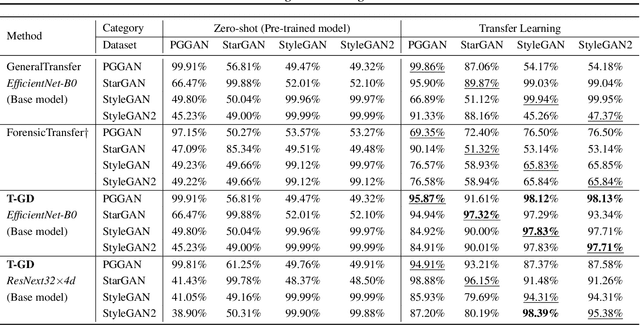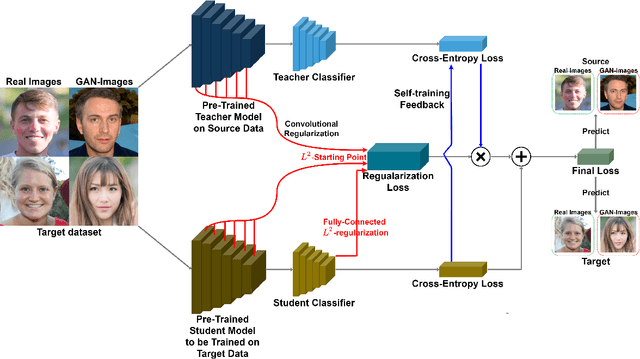Junyaup Kim
TAR: Generalized Forensic Framework to Detect Deepfakes using Weakly Supervised Learning
May 13, 2021



Abstract:Deepfakes have become a critical social problem, and detecting them is of utmost importance. Also, deepfake generation methods are advancing, and it is becoming harder to detect. While many deepfake detection models can detect different types of deepfakes separately, they perform poorly on generalizing the detection performance over multiple types of deepfake. This motivates us to develop a generalized model to detect different types of deepfakes. Therefore, in this work, we introduce a practical digital forensic tool to detect different types of deepfakes simultaneously and propose Transfer learning-based Autoencoder with Residuals (TAR). The ultimate goal of our work is to develop a unified model to detect various types of deepfake videos with high accuracy, with only a small number of training samples that can work well in real-world settings. We develop an autoencoder-based detection model with Residual blocks and sequentially perform transfer learning to detect different types of deepfakes simultaneously. Our approach achieves a much higher generalized detection performance than the state-of-the-art methods on the FaceForensics++ dataset. In addition, we evaluate our model on 200 real-world Deepfake-in-the-Wild (DW) videos of 50 celebrities available on the Internet and achieve 89.49% zero-shot accuracy, which is significantly higher than the best baseline model (gaining 10.77%), demonstrating and validating the practicability of our approach.
T-GD: Transferable GAN-generated Images Detection Framework
Aug 10, 2020



Abstract:Recent advancements in Generative Adversarial Networks (GANs) enable the generation of highly realistic images, raising concerns about their misuse for malicious purposes. Detecting these GAN-generated images (GAN-images) becomes increasingly challenging due to the significant reduction of underlying artifacts and specific patterns. The absence of such traces can hinder detection algorithms from identifying GAN-images and transferring knowledge to identify other types of GAN-images as well. In this work, we present the Transferable GAN-images Detection framework T-GD, a robust transferable framework for an effective detection of GAN-images. T-GD is composed of a teacher and a student model that can iteratively teach and evaluate each other to improve the detection performance. First, we train the teacher model on the source dataset and use it as a starting point for learning the target dataset. To train the student model, we inject noise by mixing up the source and target datasets, while constraining the weight variation to preserve the starting point. Our approach is a self-training method, but distinguishes itself from prior approaches by focusing on improving the transferability of GAN-image detection. T-GD achieves high performance on the source dataset by overcoming catastrophic forgetting and effectively detecting state-of-the-art GAN-images with only a small volume of data without any metadata information.
 Add to Chrome
Add to Chrome Add to Firefox
Add to Firefox Add to Edge
Add to Edge